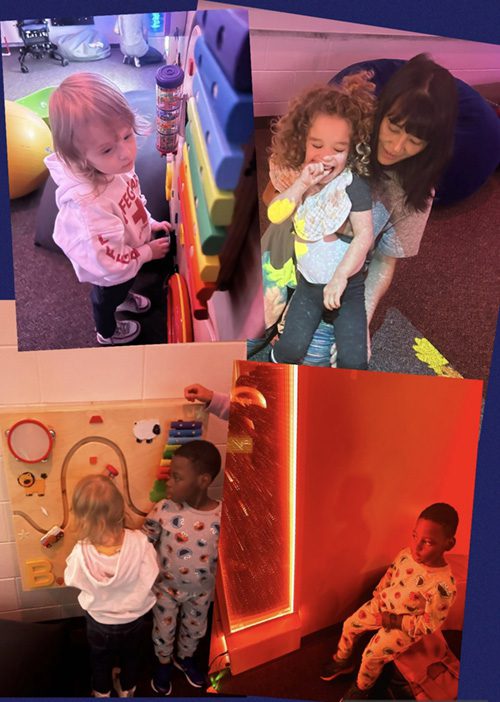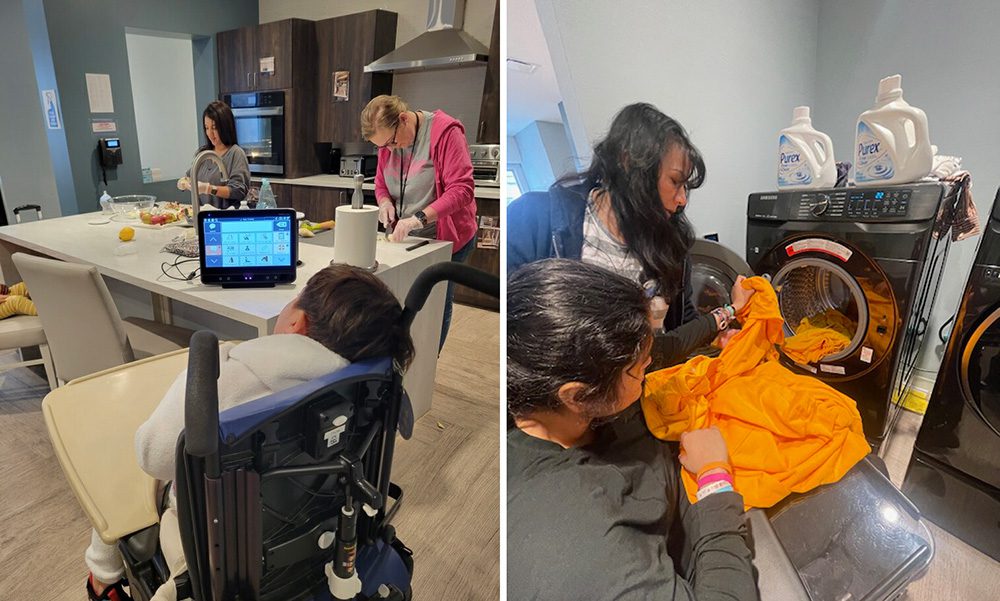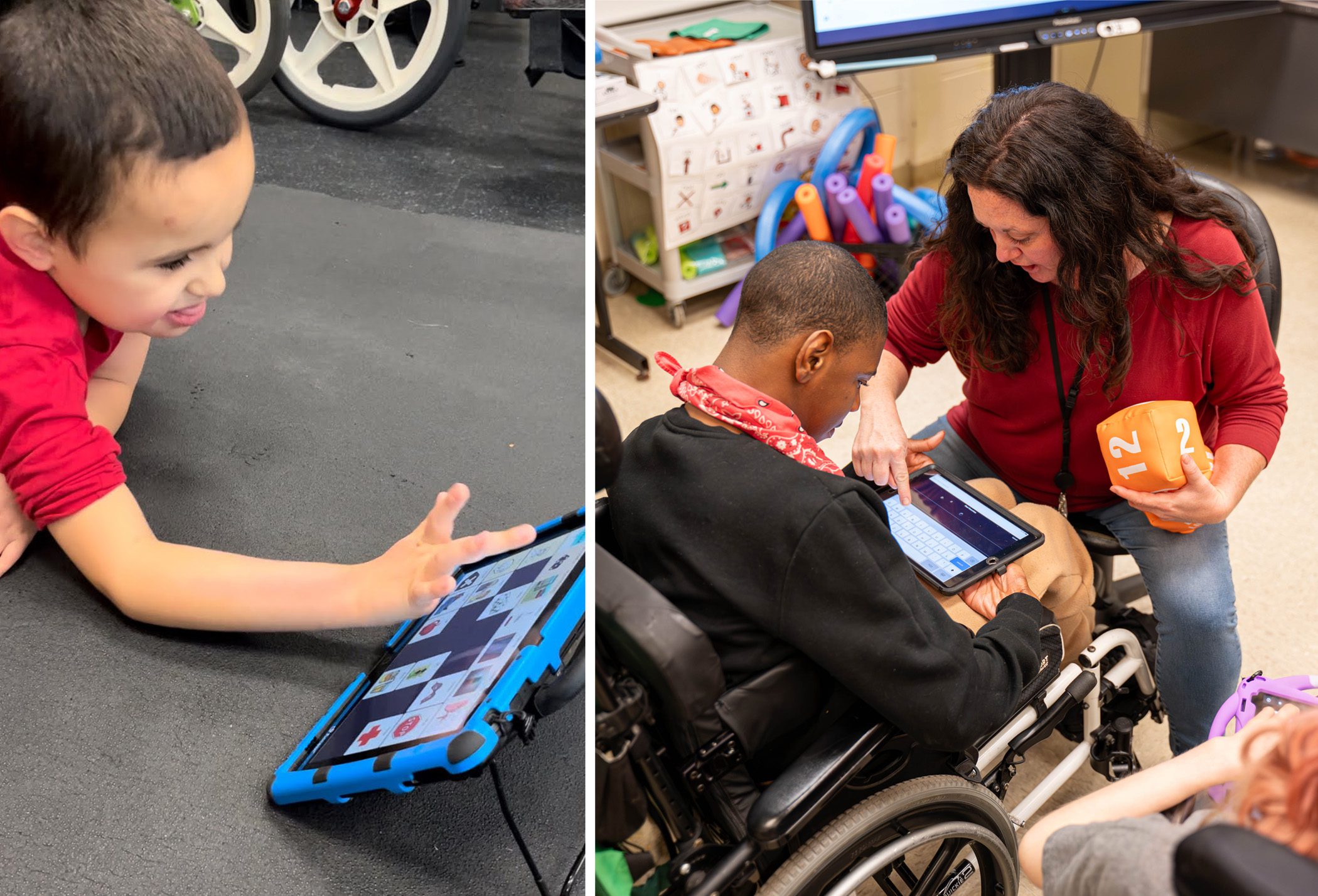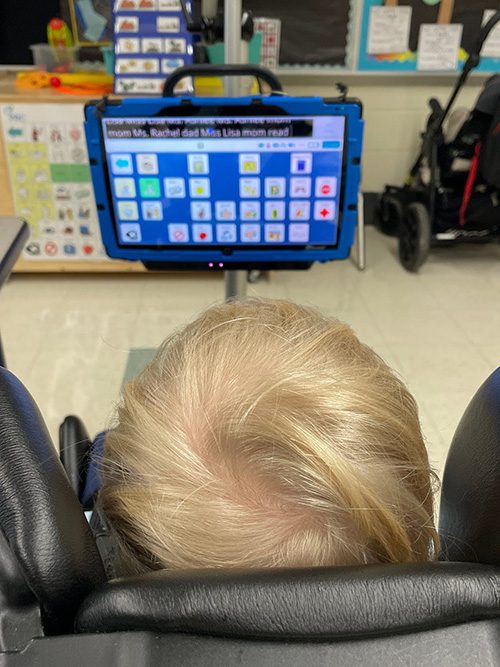Technology is part of our everyday lives. While many people use computers and electronic devices for work or leisure, some students and adults with special needs use it as a foundation for their communication and interaction with others. Technology plays an important role in education for every district across the state, and this article highlights some of the ways that students in the Joint Council of Special Services School Districts member districts integrate it into their schools.
At Bergen County Special Services School District (BCSSSD), the Bleshman Regional Day School was recognized as an Apple Distinguished School (designated from 2023-2026), based on the innovative and creative ways technology is utilized in meeting student needs.
The school year starts with students receiving an iPad when they join the Bleshman Regional Day School community. The use of technology, especially devices with projected capacitive technology, has facilitated access to curriculum, engagement with instruction, interaction with their environment and communication with others. Bleshman has incorporated technology in all the classrooms as well as the specialized areas that are designed to meet the unique needs of our students. This includes the sensory room, makerspace room, school store and apartment.
In the sensory room, students engage with equipment and materials designed with a dual purpose of stimulating the senses or providing a calming outlet that contributes to the cognitive, social and emotional well-being of children. Features in the room are controlled through an app, where students touch a picture to customize their experience.

Technology in the Sensory Room allows the students to tailor their experience.
Problem solving through exploration is encouraged in the makerspace room, through robotics, coding and 3D printing. The school store sells student-made products created in the makerspace, and is run by the students as they stock shelves, manage inventory, and handle orders/money transactions.
The Bleshman apartment is a state-of-the-art living space that includes a kitchen, dining room, bathroom, living room, bedroom, laundry room and entry area. This space offers Bleshman students the opportunity to work on functional skills that can be generalized to the home environment. It includes accessible features such as adapted cabinets and appliances, as well as lights and blinds that can be controlled through touch or voice-activated controls. These built-in modifications and technological supports assist students in accessing this environment as well as in improving their ability to navigate the apartment with increased independence.

Students use the Bleshman apartment to learn skills, such as cooking and laundry, that translate to independent living.
Bleshman continues to explore technological advances in the area of accessibility, which can assist students in increasing their ability to advocate for themselves, access their environment and interact with others.
At special services districts across the state, students have access to a variety of devices that assist with their learning experience. For example, Cape May County (CMCSSSD) had interactive touch boards installed in every classroom. These boards are instrumental in enhancing interactive learning and bringing technology and movement together for our specialized learning needs. At Mercer County (MCSSSD), teachers, students, and related services providers throughout the district use interactive touch boards to enhance instructional lessons through multi-sensory engagement, interaction and accessibility.

These students are using an interactive touch board to engage with classroom activities and lessons.
A newer piece of technology that is being used at CMCSSSD is the Sensory Projector, which displays large games and sensory walks on the floor and walls. There’s a dedicated room for these activities, which provides a perfect reward or break for students.

CMCSSSD students enjoy the Sensory Projector, which offers another way for them to engage
To accommodate students with speech or language impairments, Assistive Technology (AT) and Augmentative and Alternative Communication (AAC) devices are used to support learning and help with the critical component of effective communication. The devices create access to educational materials, enable students to participate more fully in classroom activities, and allow nonverbal students to communicate in their own voice. In CMCSSSD, devices are used by classroom teachers as well as the speech department to develop vocabulary and language skills.

AT and AAC devices give students a voice and allow them to fully interact with their surroundings.
The type of device varies and is matched to suit each student’s unique needs, and these tools range from simple picture boards to advanced speech-generating devices. For example, screen readers are available for students with visual impairments, while adaptive keyboards or speech-to-text software are provided to students who experience challenges with motor skills. By using AT and AAC, students can engage more independently in their learning.
Students who are unable to point to pictures or on-screen buttons have access to an AAC Device that tracks a student’s eye gaze to register a response on the screen. The joy is evident on a student’s face when he or she is able to communicate thoughts and feelings with the help of this device.

This student uses his eyes to look at the word he would like the AAC device to say for him.
“For the students in our districts, technology is a bridge that removes barriers,” said Jamie Moscony, Chairperson of the New Jersey Joint Council of County Special Services School Districts and Superintendent of Cape May County Special Services School District. “These innovative technology tools provide an excellent platform for our staff members to connect with their students and help connect their students with the world around them.”
Each Joint Council district has their own unique way of using technology to best fulfill the needs of their students. There are varied devices and techniques for using them, which are as diverse as the students served. Read more about the Joint Council districts on the website njspecialservices.org.

